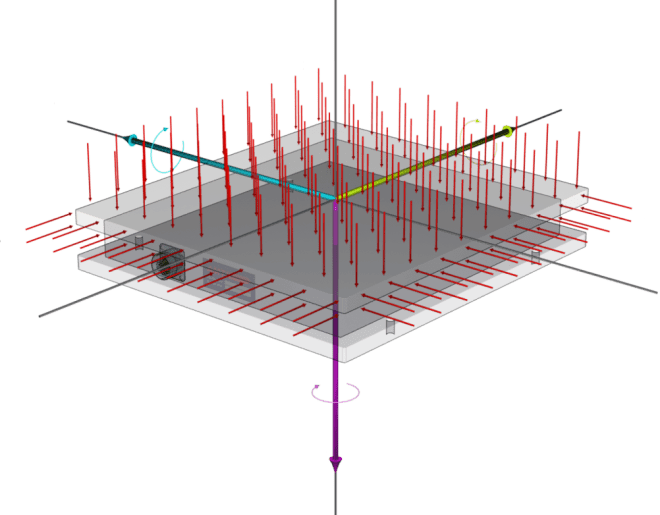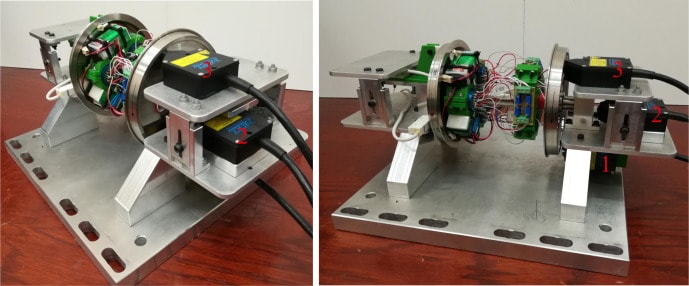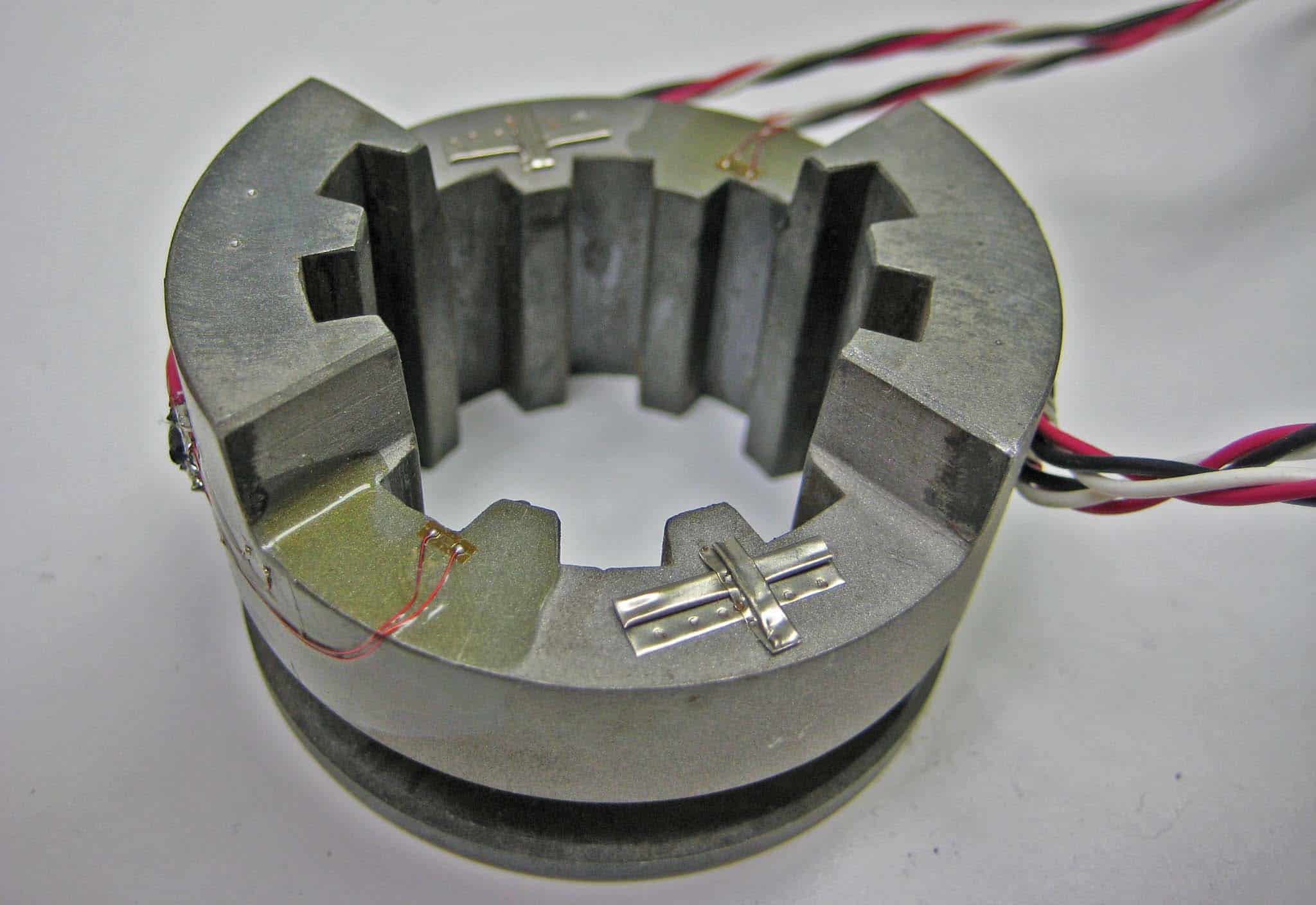|
Gage Series |
Gage Classification and Primary Utility |
Temperature Scale |
Strain Span |
Fatigue Life |
| Strain Volume
in με |
Strain
Cycles |
|
EA |
Combination of Constantan foil and a robust, flexible polyimide backing. There are numerous options accessible. Designed primarily for static and dynamic stress analysis in general. Transducers with the highest precision are not recommended. |
Normal:
–100° to +350°F (–75° to +175°C)
Special or Short-Term:
–320° to +400°F (–195° to +205°C) |
±3% for gage lengths under 1/8 in (3.2 mm);
±5% for 1/8 in and over |
±1800
±1500
±1200 |
105
106
108 |
|
CEA |
Strain gages that can be used for a variety of purposes. With massive, durable copper-coated tabs, the Constantan grid is entirely encased in polyimide. It’s primarily utilized for static and dynamic stress analysis in general. Gages with the ‘C’-Feature are emphasized in our Precision Strain Gages Data Book’s gage listings. |
Normal:
–100° to +350°F (–75° to +175°C)
Stacked rosettes limited to
+150°F (+65°C) |
±3% for gage lengths under 1/8 in (3.2 mm);
±5% for 1/8 in and over |
±1500
±1500 |
105
106* |
| *Fatigue life improved using low-modulus solder. |
| C2A |
General-purpose strain gages for stress analysis. For direct connection to instruments, pre-attached cables are included. Lead-free solder that complies with RoHS. |
–60° to +180°F (–50° to +80°C) |
±3% |
±1700
±1500 |
105
106 |
| L2A |
Gages for stress analysis that can be used for a variety of applications. Pre-attached leadwire ribbons are included. Lead-free solder that complies with RoHS. |
–100° to +250°F (–75° to +120°C) |
±3% |
±1700
±1500 |
105
106 |
| W2A
IPX8S
Rated |
For use in water-exposure situations. W2A strain gages are entirely encased with a silicone rubber coating and tested to 10 G insulation resistance, 1 meter water depth, and 30 minutes duration. They are based on the CEA Series with Option P2 pre-attached cables. Other requirements can be met if needed. Lead-free solder that complies with RoHS. |
–60° to +180°F (–50° to +80°C) |
±3% |
±1500 |
105 |
|
N2A |
Constantan foil gages having an open front and a thin, laminated polyimide film backing. The N2A Series is primarily recommended for use in precision transducers because of its low and reproducible creep performance. The unusually flat matrix is also recommended for stress analysis applications with big gage patterns, where gage installation is made easier. |
Normal Static Transducer Service:
–100° to +200°F (–75° to +95°C) |
±3% |
±1700
±1500 |
106
107 |
|
WA |
Constantan gages with high-durability leadwires are fully encased. Suitable for a wider range of temperatures and in more harsh situations than the EA Series. Option W is accessible on some designs, however it has limitations in terms of fatigue, to some magnitude. |
Normal:
–100° to +400°F (–75° to +205°C)
Special or Short-Term:
–320° to +500°F (–195° to +260°C) |
±2% |
±2000
±1800
±1500 |
105
106
107 |
| SA |
Constantan gages with solder dots are fully enclosed. The matrix is identical to that of the WA Series. Because of the solder dots, the maximum temperature and operating environment have been reduced slightly compared to the WA Series. |
Normal:
–100° to +400°F (–75° to +205°C)
Special or Short-Term:
–320° to +450°F (–195° to +230°C) |
±2% |
±1800
±1500 |
106
107 |
|
EP |
Constantan foil with a strong, high-elongation polyimide backing that has been specially annealed. It’s mostly used to measure big post-yield strains. Options E, L, and LE are available (may inhibit elongation capacity). |
–100° to +400°F (–75° to +205°C) |
±10% for gage lengths under 1/8 in (3.2 mm);
±20% for 1/8 in and over |
±1000 |
104 |
| Under high-cyclic strains, EP gages show no movement. |
|
ED |
Foil having isoelastic properties combined with a robust, flexible polyimide backing. For dynamic measurements, the high gage factor and long fatigue life are ideal. Due to the high thermal output characteristics, it is not commonly employed in static measurements. |
Dynamic:
–320° to +400°F (–195° to +205°C) |
±2%
Nonlinear at strain levels over ±0.5% |
±2500
±2200 |
106
107 |
| WD |
Isoelastic gages that are fully enclosed and have high-durability leadwires. In extreme settings, it’s used in wide-range dynamic strain measurement applications. |
Dynamic:
–320° to +500°F (–195° to +260°C) |
±1.5%
Nonlinear at strain levels over ±0.5% |
±3000
±2500
±2200 |
105
107
108 |
| SD |
Similar to the WD Series, however instead of leadwires, solder dots are used. |
Dynamic:
–320° to +400°F (–195° to +205°C) |
±1.5%
See above note |
±2500
±2200 |
106
107 |
| EK |
Combination of K-alloy foil and a robust, flexible polyimide backing. Typically utilized in applications requiring a mix of greater grid resistances, stability at hot temperatures, and the most backing flexibility. |
Normal:
–320° to +350°F (–195° to +175°C)
Special or Short-Term:
–452° to +400°F (–269° to +205°C) |
±1.5% |
±1800 |
107 |
|
WK |
K-alloy gages with high-endurance leadwires are fully encased. When self-temperature correction is required, this gage has the widest temperature range and most extreme environmental capacity of any general-purpose gage. Option W is available on some patterns, however it reduces fatigue life and limits the maximum operating temperature. |
–452° to +550°F (–269° to +290°C)
Special or Short-Term:
–452° to +750°F (–269° to +400°C) |
±1.5% |
±2200
±2000 |
106
107 |
| SK |
Solder dots on fully encapsulated K-alloy gages. Same applications as the WK Series, but with solder dots that reduce maximum temperature and operating environment. |
Normal:
–452° to +450°F (–269° to +230°C)
Special or Short-Term:
–452° to +500°F (–269° to +260°C) |
±1.5% |
±2200
±2000 |
106
107 |
|
S2K |
K-alloy foil laminated to 0.001 in (0.025 mm) thick polyimide backing, with a laminated polyimide overlay entirely encasing the grid and solder tabs. Large solder pads are included for easy leadwire hookup. |
Normal:
–100° to +250°F (–75° to +120°C)
Special or Short-Term:
–300° to +300°F (–185° to +150°C) |
±1.5% |
±1800
±1500 |
106
107 |
|
|
|
|
|
|
|




